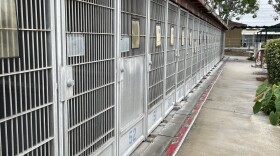A California Highway Patrol officer responding to a report of a runaway Toyota Prius last week arrived to find a Border Patrol agent near the driver with emergency lights on.
The Border Patrol presence raises the prospect that there were other witnesses. It is one of the few new details in a report released Wednesday by the CHP that is consistent with what the CHP and the driver, James Sikes, have previously said.
But the seven-page CHP report sheds no new light on wildly divergent explanations from Toyota Motor Corp. and Sikes about what happened when the driver called 911 on March 8 to report that his gas pedal was stuck on a California freeway, sending him to speeds topping 90 mph.
Toyota has dismissed Sikes' account, saying its tests show he pressed the gas and brakes rapidly 250 times, the maximum amount of data that the car's self-diagnostic system captures.
The report revisits the harrowing ride that Sikes and CHP Officer Todd Neibert described to reporters shortly after the episode on Interstate 8, east of San Diego.
Neibert wrote that he approached the Prius from behind to find a Border Patrol agent in an unmarked Chevrolet Tahoe with emergency lights illuminated from the rear window.
"It was staying ahead of us and it was later determined that the agent driving the Chevrolet Tahoe was aware of the situation," Neibert wrote.
The Prius brake lights were on "for a period of time and would turn off, indicating the driver was possibly pumping the brakes," Neibert wrote. "I was within ¼ mile of the vehicle and could smell the heated brakes which indicated they had been used extensively."
Neibert told Sikes to shift to neutral but the driver shook his head from side to side, indicating to the officer that it didn't work or he couldn't do it. Sikes later told reporters he didn't shift to neutral because worried he might go into reverse or flip.
Neibert spoke on his radio with colleagues about how to rescue Sikes as the car was less than 20 miles from steep downhill grade and a sharp left turn.
"If the Prius made it to that location, the ultimate result would have most likely led to a catastrophic ending," the officer wrote.
The officer said the Prius reached 95 mph before passing two trucks. As they went uphill, he told Sikes to apply the foot brake and parking brake simultaneously, and the car gradually slowed.
Neibert had passed the Prius and was prepared to stop the car with his rear bumper but Sikes came to a stop without help, according to the report. Sikes was not injured.
After stopping, Sikes told Neibert he tried three times to lift the gas pedal with his hand but was unsuccessful.
"He thought he was going to die and knew that there were numerous areas where there were steep cliffs and embankments along with sharp curves," the officer wrote.
Sikes was initially reluctant to speak with reporters, but the officer urged him to go to the El Cajon station to "put the media at ease," according to the report.
"I advised him the media would most likely seek him out if he did not speak to them voluntarily," Neibert wrote.
Toyota has stopped short of saying that Sikes fabricated his story but has said his version of events is inconsistent with its technical findings. Tracy Segal, a company spokeswoman, said late Wednesday she had no immediate comment on the CHP report because she had not received a copy.
The episode was among the highest-profile headaches Toyota has suffered in recent months. It recalled more than 8 million cars and trucks worldwide because gas pedals can become stuck in the down position or be snagged by floor mats. Dozens of Toyota drivers have reported problems even after their cars were supposedly fixed.
The report does not say how long the Border Patrol agent was in Sikes' proximity or whether the agent saw anything significant. CHP spokesman Brian Pennings said the agency is attempting to get a statement from the agent.
The CHP officer does not recall the agent stopping after Sikes safely came to a stop, Pennings said. He said the CHP had notified the Border Patrol after the driver called 911.
Pennings reaffirmed CHP's position that no evidence has emerged to doubt Sikes' version of events.
The report was released the same day that investigators from Toyota and the U.S. government inspected a crashed 2005 Prius in a suburb of New York City to see if a black box-like device or its wreckage could point to problems with the brakes or accelerator.
The black box, known as an event data recorder, yielded information on engine speed and pedal position, Toyota spokesman Wade Hoyt said. Investigators were expected to return Thursday.
A housekeeper who was driving the car told police that it sped up on its own as she eased forward down her employer's driveway on March 9 and hit a wall across the street. She was not hurt. Harrison Police Department Capt. Anthony Marraccini said driver error had not been ruled out or indicated.
Associated Press writers Dan Strumpf and Jim Fitzgerald contributed to this report.





